Jumping spider: pest profile, and are they harmful to humans?
The jumping spider is a species that derives its name from its ability to catch prey by jumping. They exist in over 4,000 species, making them the largest spider species in the world. They also have a great vision that they use when hunting and navigating. Find out all the interesting facts about these species, including their profile, characteristics, and habitat.
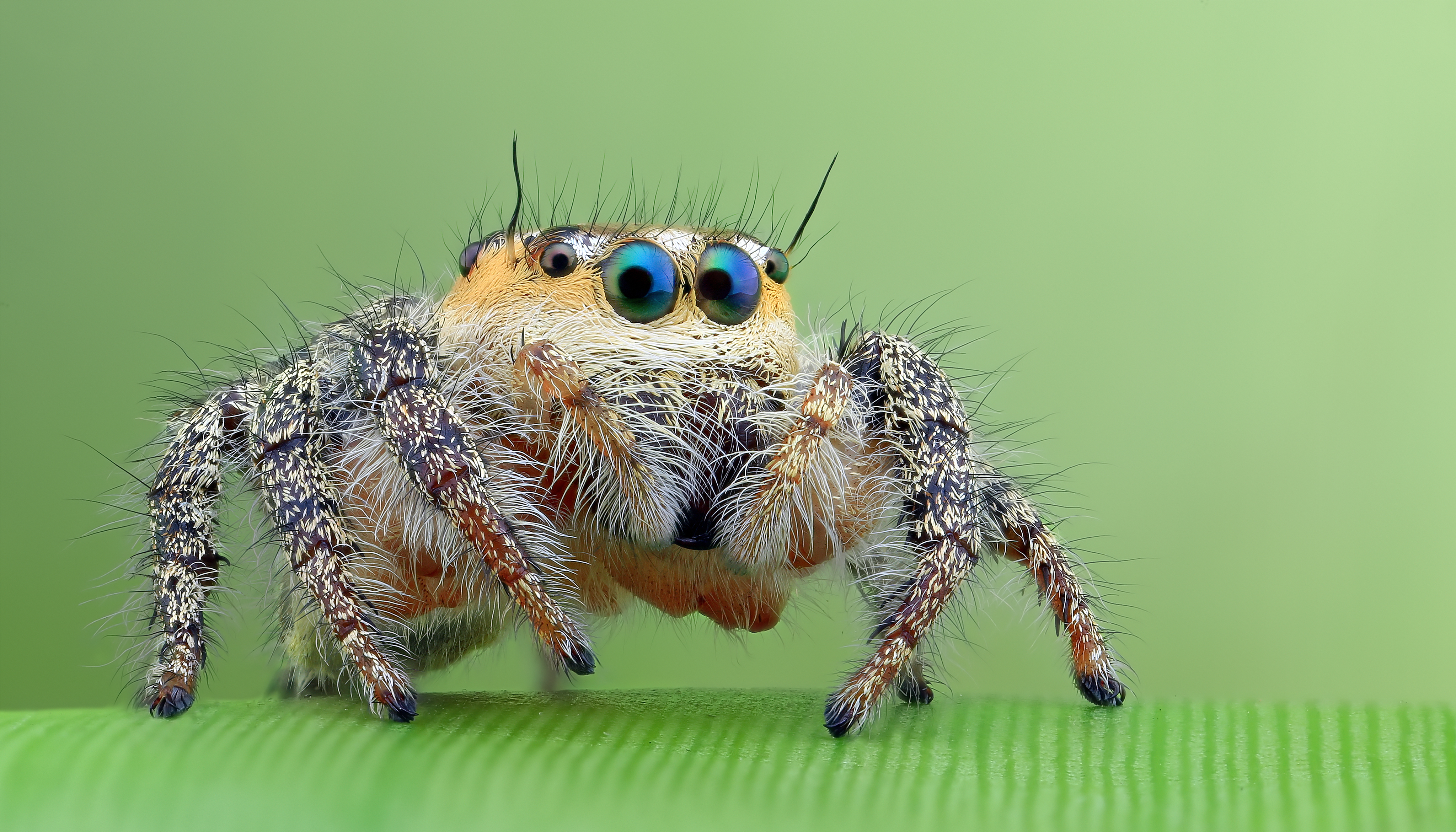
Source: Getty Images
Many people are afraid of spiders due to their intimidating appearance. However, it is not all insects that are harmful to humans. Some are useful in the home setting and help control pest contamination by feeding on common household critters.
What is a Jumping spider?
It is a species of spider that comes from the family Salticidae. They are renowned for their hunting nature that involves jumping to catch their prey. Did you know that the species comprise about 13% of the spider population in the world?
How far can a Jumping spider jump? Scientists evaluate that it can jump to distances of between 10 to 50 times its body length.
What do Jumping spiders look like?
To be able to identify one, you should look out for specific physical features. Most of the insects in this species have unique characteristics that make them stand out.
- Colour: They appear dull in colour, with pale white markings on their arms and legs.
- Size: They are about 4-22 mm in size.
- Legs: They have eight legs
- Body: They have a compact body with short legs. The adult ones have dense hairs or scales that are vividly coloured.
- Eyes: They have eight eyes arranged in three rows. The front row features four eyes, with the middle pair being huge.
Jumping spiders can be mistaken for the Black Widow because of their small black bodies and short legs. Another interesting fact is that these insects have the most exemplary vision of any order Araneae species. They can detect and react to movement from up to 18 feet away (45 cm).
What is the ideal habitat for Jumping spiders?
Where can you find these insects? They live on almost all the planet's continents except the North and South poles. They adapt to any environment, including tropical forests, deserts, mountain regions and scrublands.
What do Jumping spiders eat?
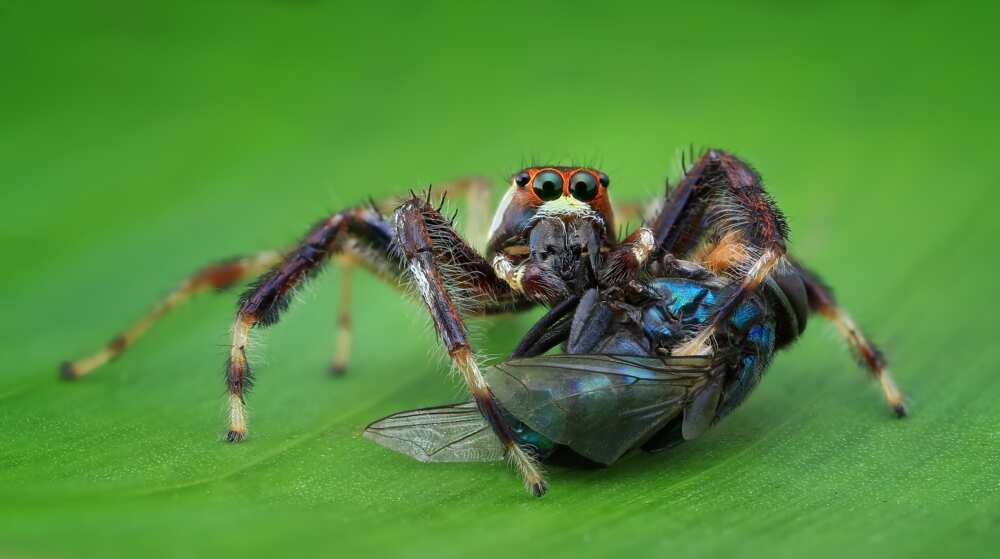
Source: Getty Images
Jumping spiders are predatory by nature. Their food includes insects that are the same size as them or smaller. They do not create webs to catch prey, but they may use a silken thread to attach themselves down a vertical surface.
Are Jumping spiders harmful to humans?
No. Humans are not affected by them even though they are venomous. Their venom is usually not potent enough to harm humans. When they bite, it is usually because they are hurt or cornered.
Why do jumping spiders jump at you? They usually jump on humans accidentally or if they feel threatened. However, they tend to shy away from humans and flee when encountered. Are Jumping spiders aggressive? No. They are not known to attack but flee from any encounters.
Can Jumping spiders be domesticated? Yes. Having a Jumping spider pet is not a strange thing to do. Cute Jumping spiders are popular among insect pests kept by humans. These insects are homely and are easy to domesticate as pets.
How long do Jumping spiders live?
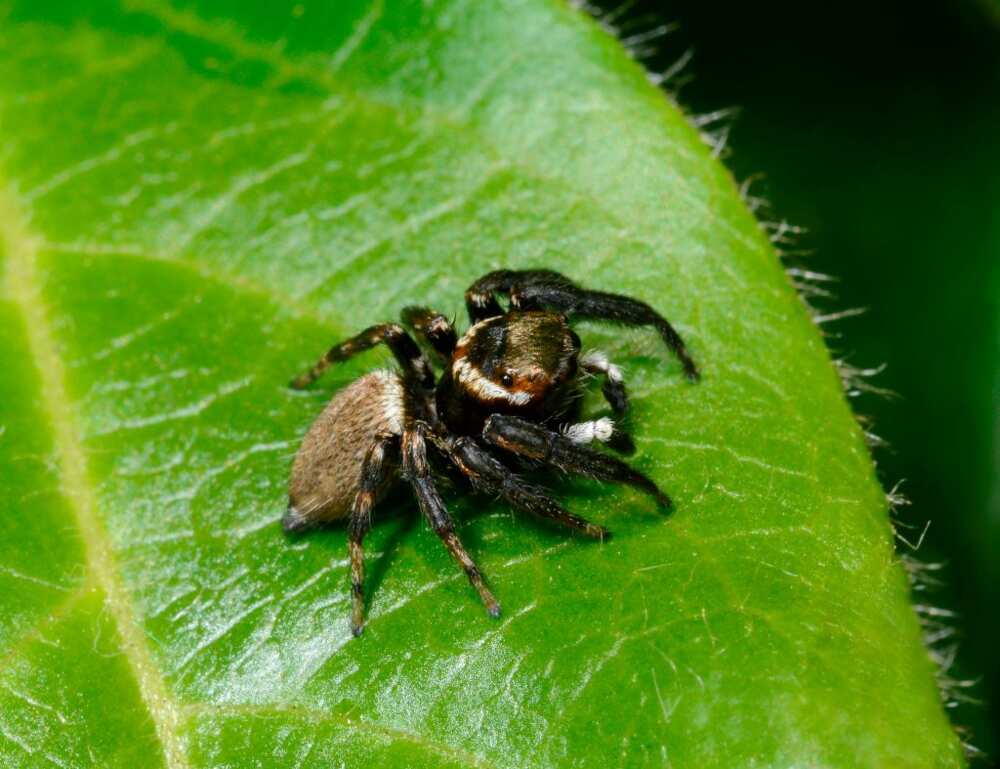
Source: Getty Images
Depending on the species and sex, they can last anywhere from 6 months to 3 years. Males do not typically live as long as females, with the oldest one ever recorded being a three-year-old female one.
Did you know that the spider that visited space died in 2012? The Jumping spider that pioneered space travel, Nefertiti, spent 100 days inside the ISS (international space station). Unfortunately, Nefertiti died after living for ten months which is the average expected lifespan of the species.
Types of Jumping spiders
Since they have many different species, it is difficult to identify the ones to keep as pets. However, here are some of the popular species that are domesticated.
1. Bold Jumping spider (Phidippus Audax)
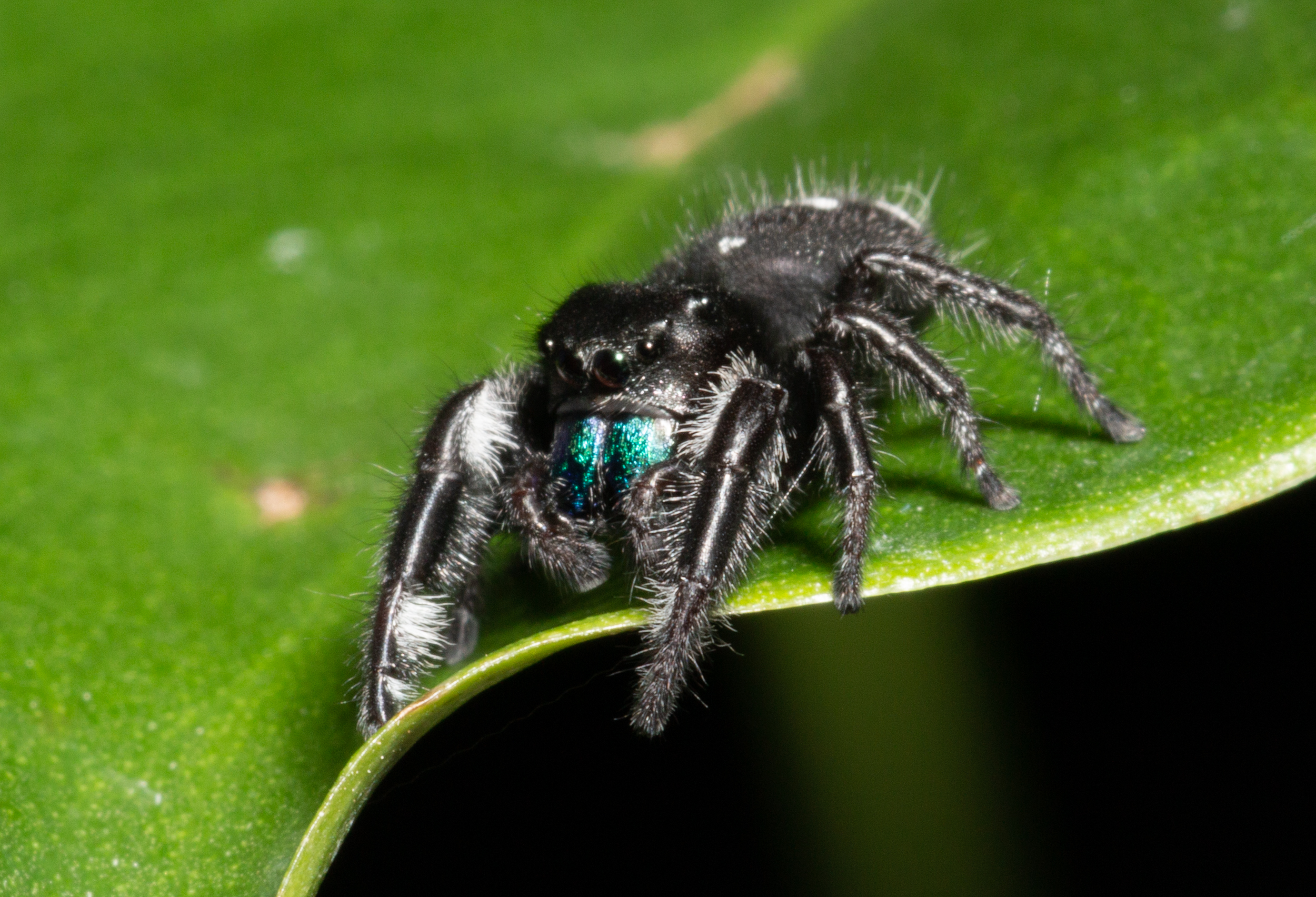
Source: Getty Images
This species has a bold nature and doesn't shy away from confrontation. The Phidippus Audax's front two fangs have a vivid metallic green or blue colour.
2. Regal Jumping spider (Phidippus Regius)
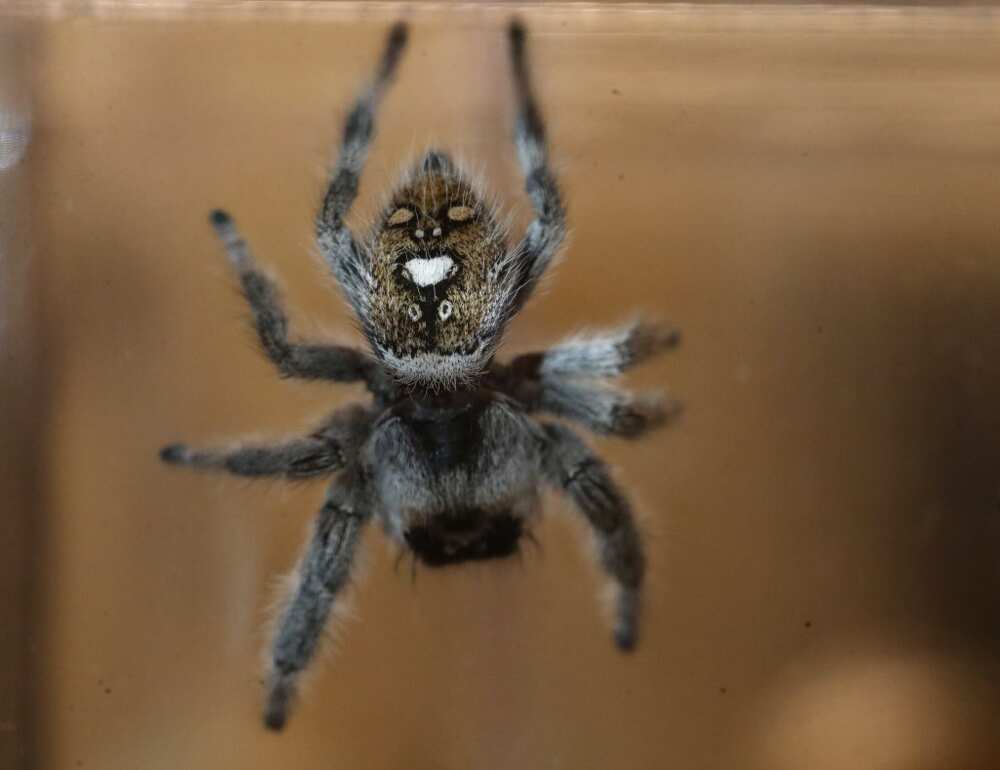
Source: Getty Images
The Phidippus Regius live throughout eastern North America. The males have a black base with a distinctive pattern of white spots and stripes. The females' colour ranges from grey hues to brilliant oranges.
3. Tan Jumping Spider (Platycryptus Undatus)
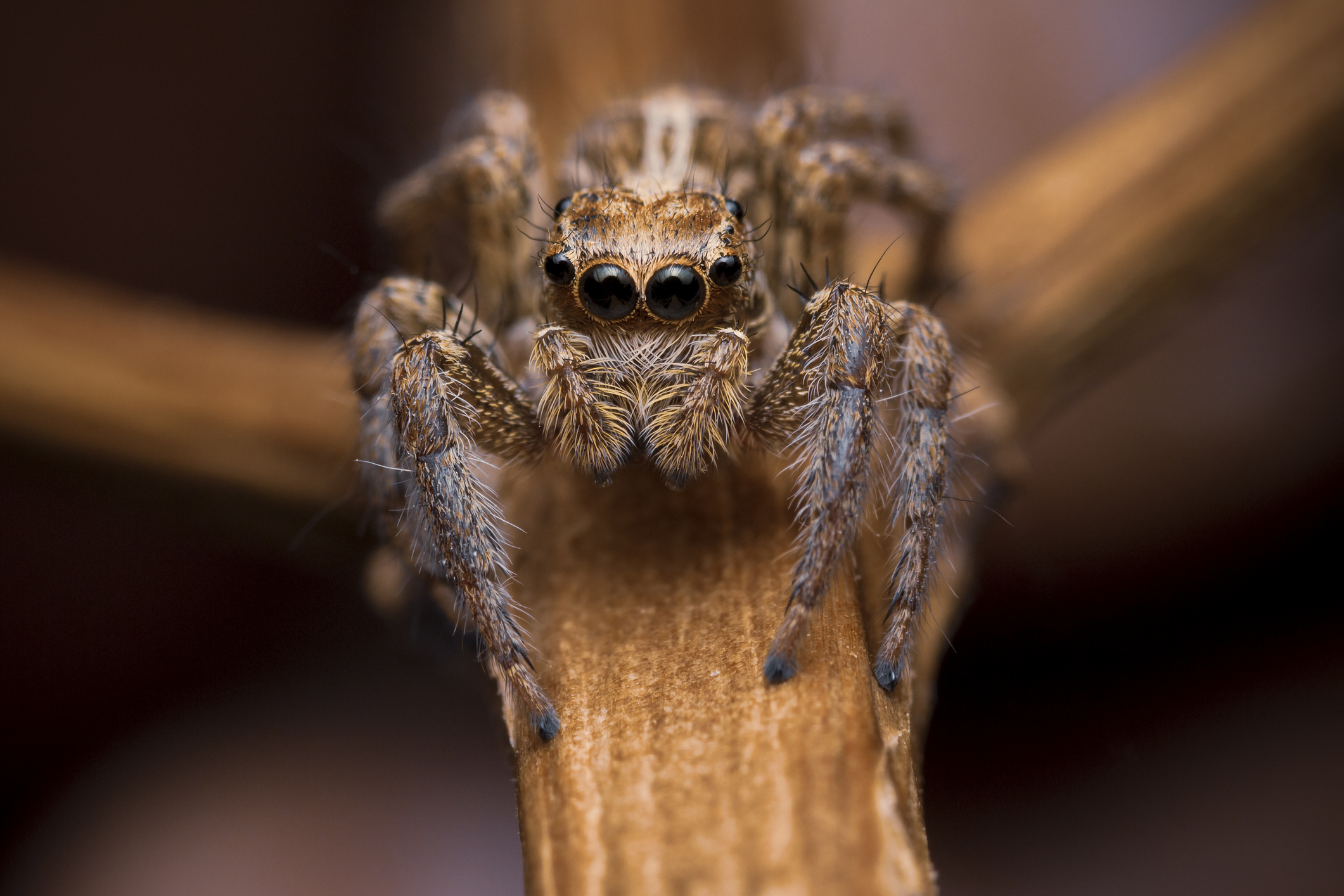
Source: Getty Images
The Platycryptus Undatus live in both Canada and the United States. They have a reputation for not being afraid of humans. They may be grabbed up in your palms and wander around curiously. However, if you pinch or squeeze it, you'll be vulnerable to their protective bite.
4. Zebra Jumping Spider (Salticus Scenicus)
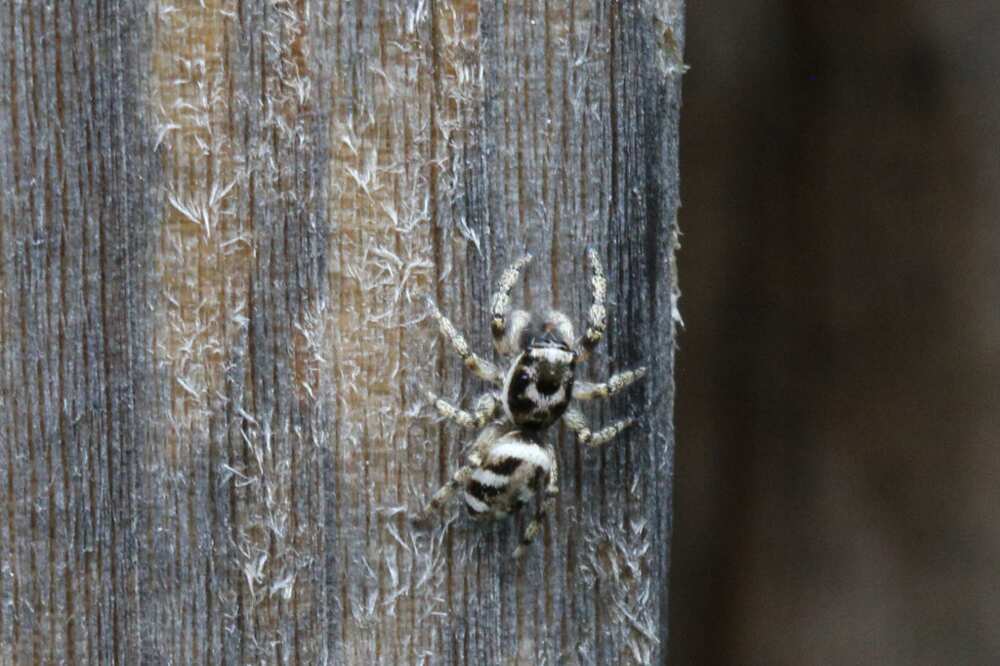
Source: Getty Images
The Salticus Scenicus is widespread in the United Kingdom, Europe, and North America. This species has urbanised and lives in human towns and homes. Their hunting habit has been described as cat-like, judging distance and pouncing on their prey with the appropriate vigour.
5. Elegant Golden Jumping Spider (Chrysilla Lauta)
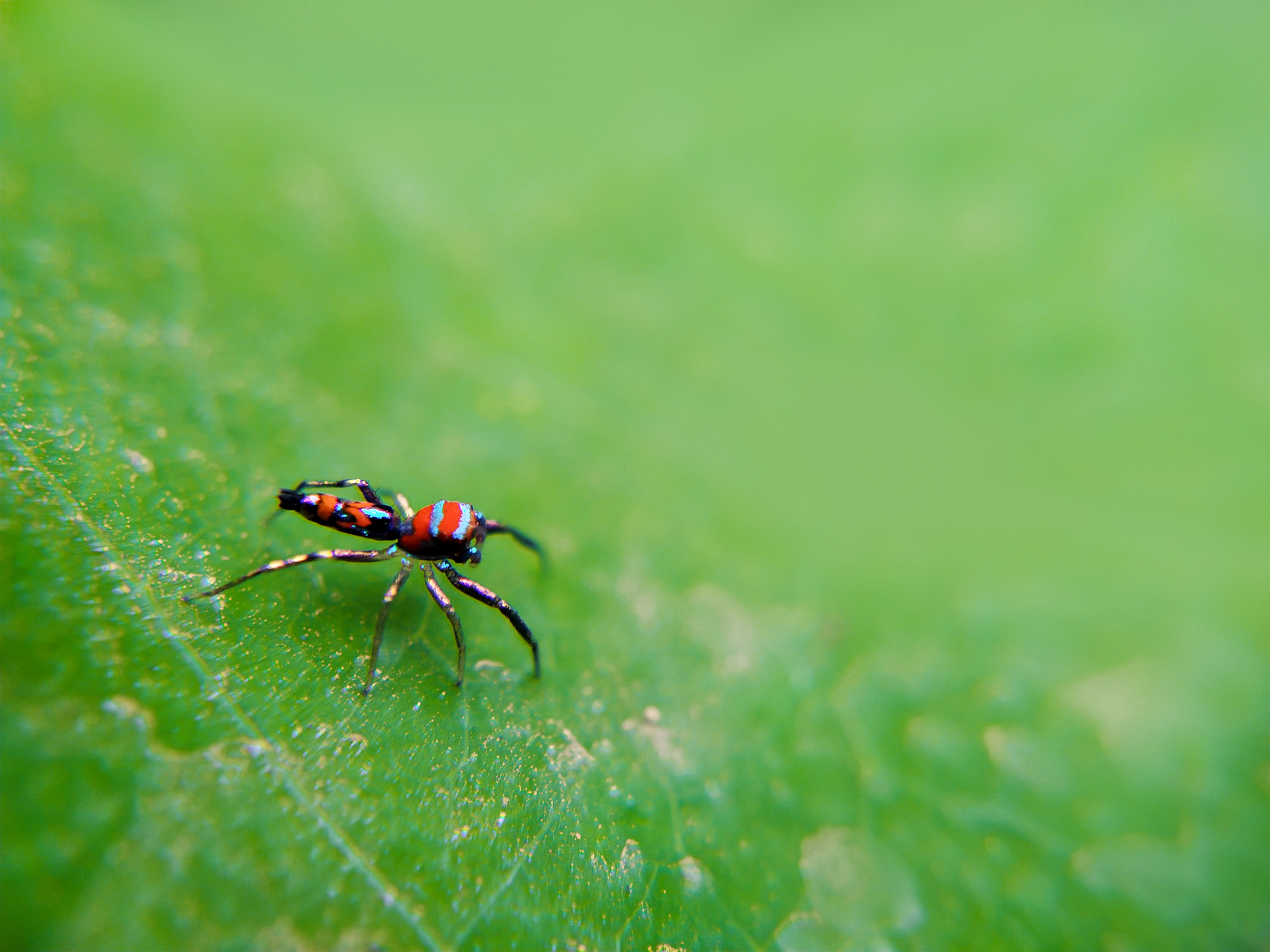
Source: Getty Images
The Chrysilla Lauta lives in China, Vietnam, Burma, Myanmar, and Singapore rain forests. Most of its body has a golden bronze coat in red, blue, and yellow, especially around its thorax.
Courtship and mating behaviour
Jumping spiders use both motions and morphological characteristics to create elaborate visual courtship displays. The visual and vibratory components of courting differ substantially between species. Many species have UV reflectance patches, which are visible in adult males.
If the female is receptive, the male crawls on her back and uses his palps to inseminate her. In addition, it is worth noting that brightly coloured males attract more females. However, that factor is also a disadvantage as the bright colour makes them vulnerable to prey.
The Jumping spider is, without a doubt, an intelligent insect. Its ability to jump several feet and acrobatic nature makes it stand out among other insect species. Many insect pet lovers prefer them as home pets due to their harmless nature and ability to control pests at home.
Yen.com.gh recently published an interesting article about Spiderman actors. The superhero is one of our generation's most recognisable comic book characters. So far, there have been several superhero films in which different actors have played the main character.
So, how many actors have portrayed Spiderman? Discover the list of actors who have played the leading role since the first film adaptation.
Source: YEN.com.gh






